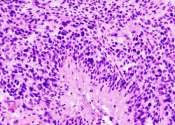New study shows mathematical models helped reduce the spread of COVID-19
Colorado researchers have published new findings in Emerging Infectious Diseases that take a first look at the use of SARS-CoV-2 mathematical modeling to inform early statewide policies enacted to reduce the spread of the ...
Jul 7, 2021
0
2









